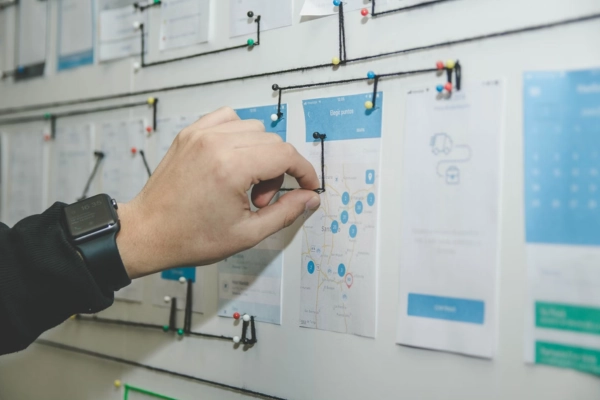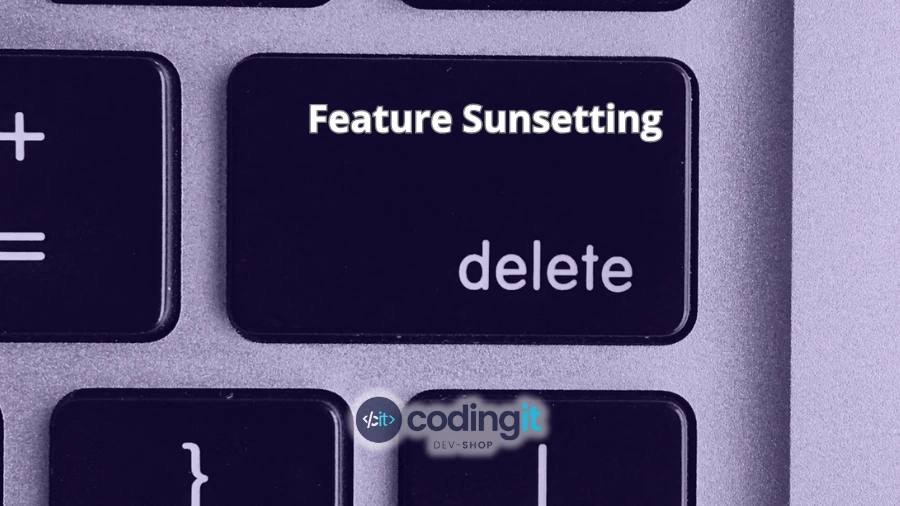How many features in your app are secretly doing nothing but still breaking things? If you’re building or managing a digital product, chances are there’s an entire graveyard hiding in your codebase. Features that were launched with excitement, pitched with confidence, maybe even requested by a “key client.” And now? Crickets. No usage. No value.
But they’re still there. Adding bloat to your UI, slowing down your QA cycles, confusing new users, and silently increasing the risk of every release.
Nobody talks about it, but almost every product team is quietly dragging around dead weight. Why? Because feature sunsetting feels like admitting failure. Because no one wants to be the one who says, “Let’s kill that thing we built six months ago.”
So, we let it rot in the background. Hoping it won’t crash anything important. And just to be clear, pruning features isn’t just good hygiene. It’s strategic. It’s how you keep a product fast, focused, and maintainable. It’s how you make sure your team is building for what’s next, not babysitting the past.
Blog Summary:
Feature sunsetting doesn’t get talked about enough, but it should. In this post, we’ll cover:
- The impact of keeping features no one’s using
- Why most teams avoid the hard (but necessary) decisions
- How certain features sneak in for the wrong reasons
- The risks of losing product focus as you grow
- A simple, repeatable process to clean things up
- What clear communication during sunsetting look like
- Why your developers will quietly thank you for doing this
- Why feature removal is a strategic advantage

Table of Contents:
The Discipline No One Taught Us
We’ve written before about how internal tools quietly become this weird museum of past decisions. And yet, nobody touches it. It just… stays. It turns out that the same thing happens in customer-facing products. Just bigger, messier, and harder to justify when someone finally asks, “Why is this still here?”
Most teams aren’t trained to think about removal. They obsess over shipping. They plan sprints around what’s next. They celebrate the launch. And once something’s live, they mentally file it under “done”, as if no future maintenance, complexity, or UX tradeoff will ever come from it.
We don’t prune because no one ever taught us that pruning is part of building. That saying no longer is just as strategic as saying yes. That removing something that once made sense isn’t backtracking, it’s evolution.
What’s the Harm in Keeping It?
More than you think. Most unused features don’t scream for attention. They don’t crash your app. They don’t blow up metrics. They just sit there, quietly inflating complexity, chipping away at velocity, and making every change riskier than it should be.
Every setting, toggle, or button adds friction. Not always for the user, true, but for your team. Another thing to test. Another edge case to cover. Another mental tax in every planning session, QA run, and onboarding flow.
And it adds up. Over time, your product feels slower to evolve. Minor updates turn into full-blown investigations. Engineers start leaving “just in case” logic untouched. Designers work around broken patterns. Nobody remembers why something was built, but nobody wants to be the one to kill it.
And that’s just the internal cost. On the surface, all those features make your product look cluttered. Unfocused. Like you haven’t decided in three years. That’s the real harm. Not just the technical debt, but the strategic drift. The weight of everything you were too cautious to remove.
When Features Are Built for Sales
If you’ve ever sold B2B software, you know this one by heart. You didn’t build that feature because it aligned with your product vision. You built it because a procurement checklist demanded it. Or because Legal needed to check a box. Or because a prospect said, “We’ll sign if you add this one thing.”
So you do it. The deal closes. Everyone celebrates. And then no one touches it again.
In B2B SaaS, there are cases where even half of your features exist solely for sales and compliance optics. Not retention. Optics. Because enterprise buyers aren’t always the same as end users, and the decision to buy often hinges on things that never get used again.
That doesn’t make those features a mistake. Sometimes winning the deal is the strategy. But what starts as a tactical decision quietly becomes permanent baggage. It gets even trickier when clients ask for something, claim it’s critical, and then barely use it. Maybe once or twice a year. Maybe just during their annual reporting cycle. The value is there, but now you’re stuck maintaining a feature for two data pulls a year.
That’s the hard part: distinguishing between niche-but-essential… and legacy clutter. Most teams never do.
When the Product Forgets What It Is
Products rarely break all at once. What actually happens is weirder. You look up one day and realize: this doesn’t feel like the product you set out to build.
Somewhere along the way, the purpose got blurry. A dashboard here, a settings tab there, a half-finished workflow “just in case.” Every addition made sense in the moment. But the sum of all those moments? A product that’s kind of everything. And kind of nothing.
We are not saying that you shouldn’t adapt. That’s part of the process. But if you try to market it and struggle to explain it, it’s probably not evolution. It’s a drift. Growth should sharpen your value, not bury it under layers. If the pitch keeps changing depending on who’s in the room, that’s a sign the product is trying to be too many things.
And this is what happens when feature sunsetting isn’t part of the process. The product keeps expanding to solve adjacent problems, serve edge cases, and please new segments. Until eventually, your team is building a tool for everyone and no one.

How to Remove a Feature (Without Burning Everything Down)
Most teams treat feature sunsetting like ripping out a live wire. So, they avoid it. Delay it. Talk in circles about it. Meanwhile, the feature is still dragging down the product. But know that you don’t need a committee or a quarter-long initiative to start fixing this. You need a process that doesn’t scare everyone. Something like this:
- Audit usage: Get the real data. Not gut feelings. Not “I think one client still uses it.” Look at actual usage and frequency. Decisions should always be based on information.
- Align with strategy: Ask if the feature supports what we’re building now. Or is it solving a problem we’ve already outgrown? Those are two very different scenarios.
- Assess impact: Who’s using it? How? What breaks if it goes away? Is there a workaround or better replacement?
- Prototype the removal: Hide it behind a flag. See what happens. Measure fallout before committing.
- Communicate early: Don’t surprise users. Give notice, explain why, and offer support or alternatives. If it’s something you should be keeping, you will be informed. Trust us.
- Follow through: Kill it in code. Clean it up in the documentation. Don’t leave ghosts behind.
This isn’t a silver bullet, but it’s a repeatable habit. The more you treat feature sunsetting like any other part of product development, the less dramatic it becomes. It’s just focus. With a version number.
Communicating Change Without Panic
One of the most important points we mentioned is communication. Killing a feature isn’t the problem. Surprising your users is.
You don’t need a PR team for every sunset. But you do need to communicate like someone might care. Because sometimes, someone does. And if you don’t explain what’s happening, they’ll make up their own story.
A good feature sunsetting message does three things:
- It tells people what’s changing
- It explains why
- And it offers what’s next
That’s it. No drama or apologies for making the product better. If it’s an enterprise feature or anything tied to a contract, give plenty of lead time. Offer alternatives. Be helpful. Don’t let a quiet depreciation turn into a loud renewal problem.
And internally? Don’t assume everyone on the team knows what’s being removed or why. Align early. Align often. There’s nothing worse than your own CS team hearing about a removal from a client before they hear it from you.
Your Developers Are Quietly Drowning
Ask any developer working on a product that’s been around for a while: What’s the hardest part? It’s not the frameworks (sometimes it is, to be honest). It’s not building something new. It’s navigating around what’s already there.
Every legacy feature, no matter how small, adds weight. You write a new function, but now you have to check if it affects that obscure reporting flow nobody’s touched in 14 months. You fix a bug, and QA has to test five unrelated modules just in case. You want to refactor, but you’re afraid to break something that’s technically still “live.”
Feature sunsetting helps reclaim engineering sanity. Because when the codebase is cleaner, developers ship faster, QA cycles shrink, onboarding new engineers gets easier, and roadmap planning becomes less defensive.
And for us, teams that build and maintain custom software, this matters. Delivering new features is not the only thing we do. We help you make sense of what you already have. That means building with intention and knowing when to let things go.
A Growth Strategy
In case we weren’t clear enough, the goal isn’t to end up with a minimalist product that does nothing. The goal is to end up with a product that knows what it’s for. And feature sunsetting is how you get there.
The teams that prune move faster. They develop with more confidence. Their UX is sharper. Their architecture doesn’t fight them every sprint.
If your team needs help cleaning up the mess, let’s talk. We work with companies that are scaling fast and starting to feel the weight of it. Feature audits, simplification, custom development with a long-term mindset. Just a clean, focused product that’s easier to evolve. Reach out. Let’s get your product moving again.
